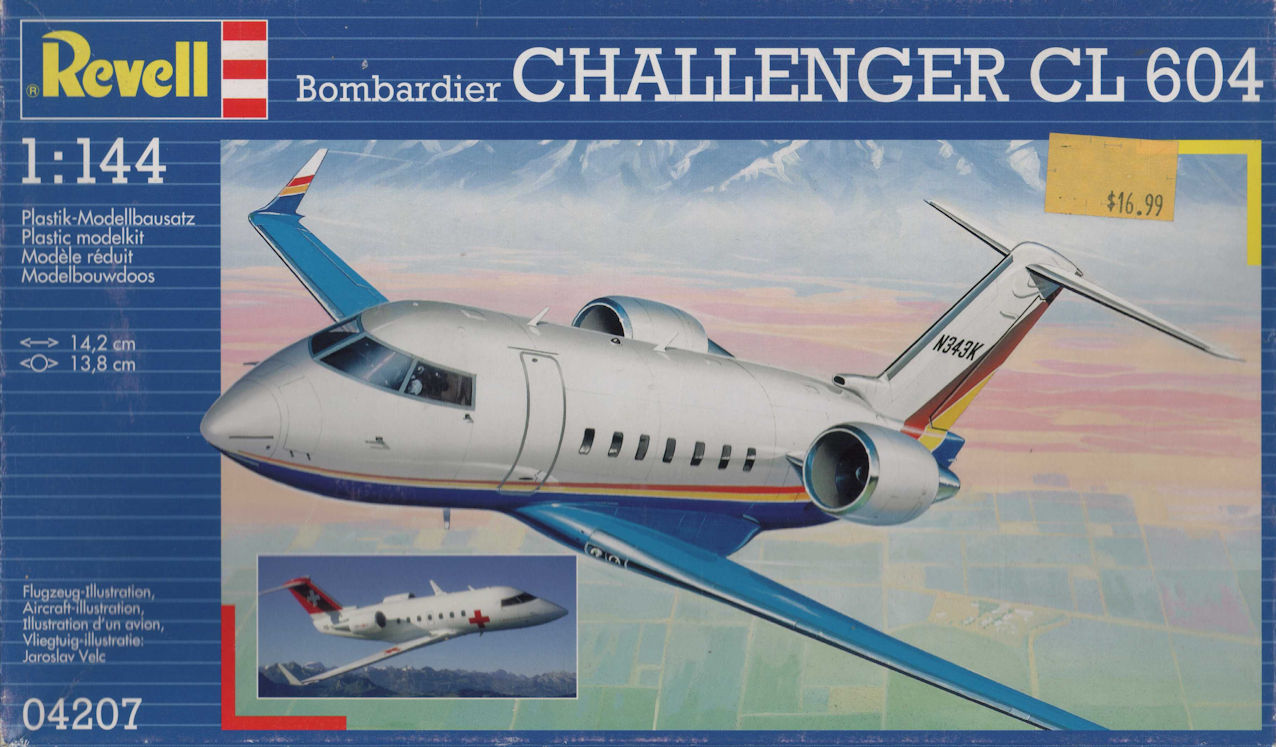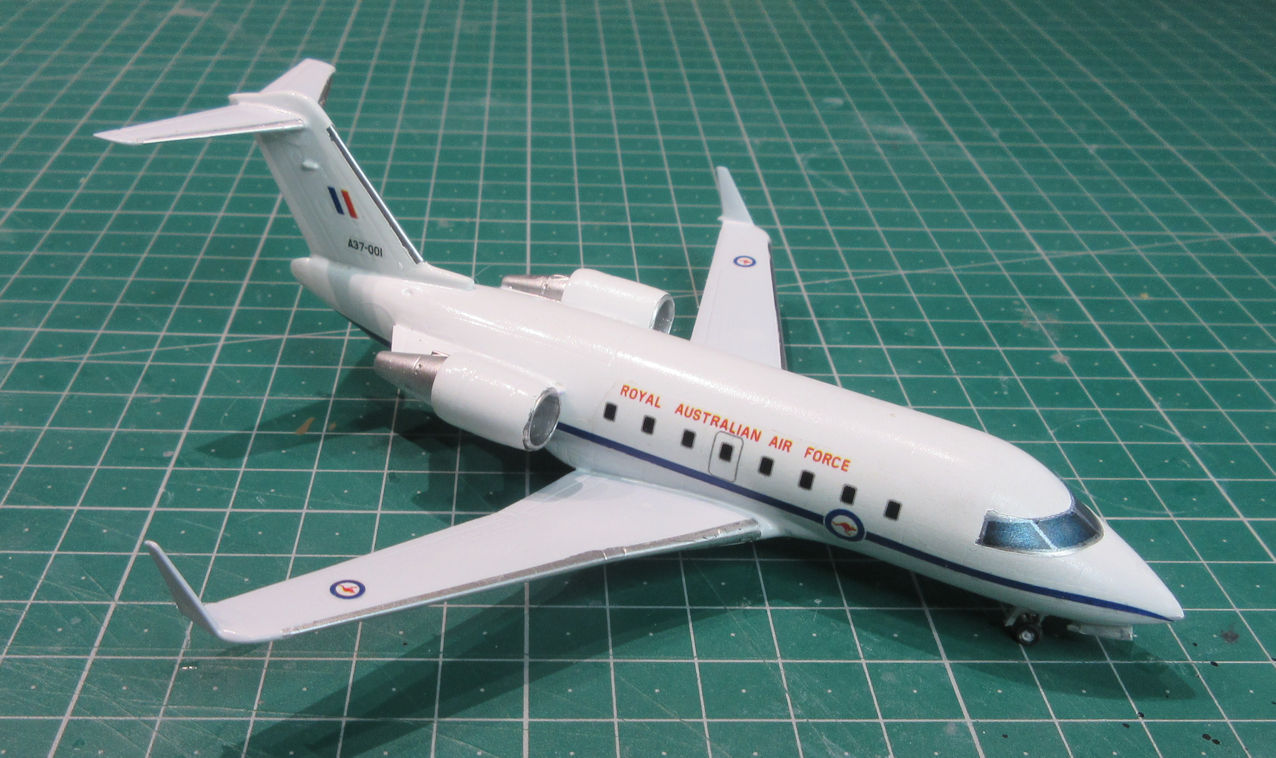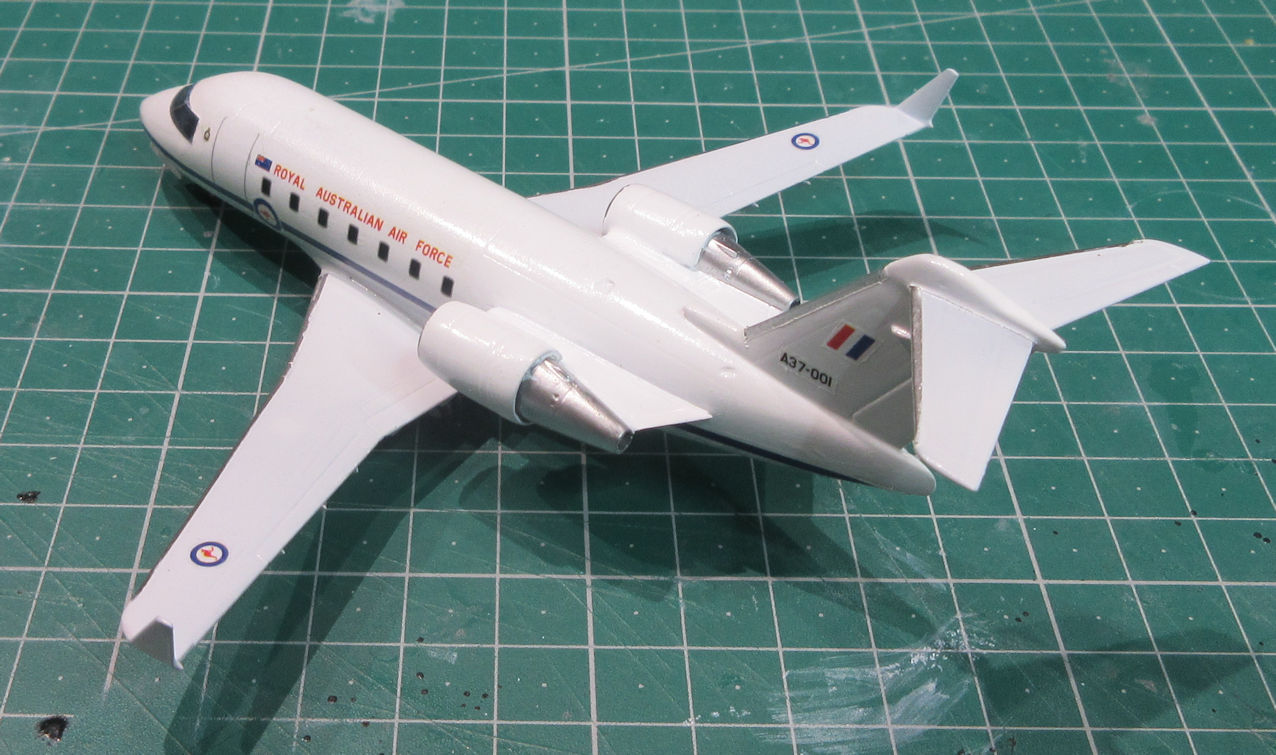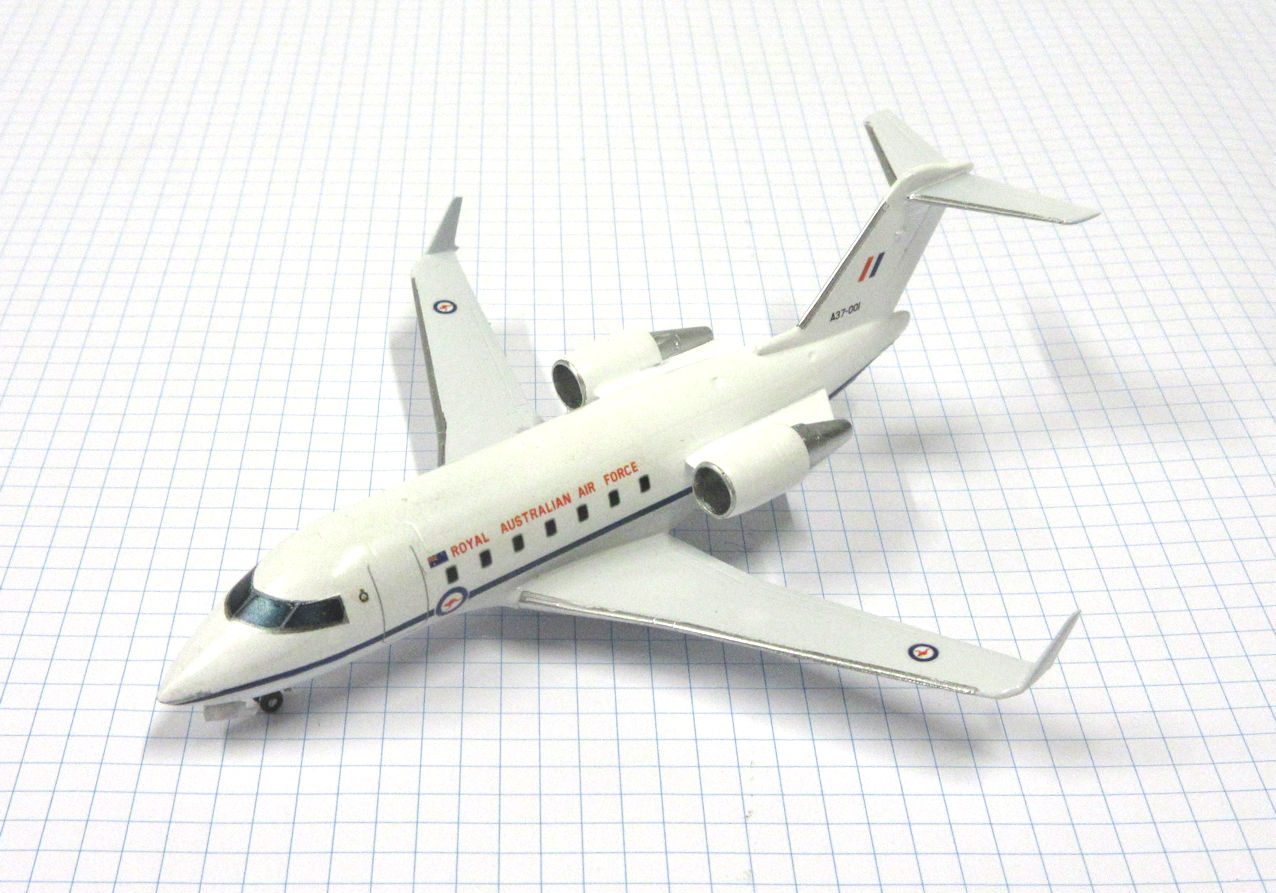For once this year I’ve found a modelling subject that meets all my preferred criteria. It’s an airliner in a simple grey and white color scheme. It’s a Revell kit so it is virtually challenge free. And it was flown by the Royal Australian Air Force so it fits in with my plan to focus on RAAF aircraft this year.

The only real disadvantage with this model is that the aircraft is not a large one and so the kit parts are small, and when I say small I mean the nose wheels are less than three millimeters in diameter (so you don’t want to tempt the carpet monster with one, as I did). So, apart from having to cope with that challenge, everything goes together pretty well. The moulds must be very old by now so there was some flash to contend with, which was s little challenging on the smaller parts, and one of the nose wheels tried to escape while I was taking care of flash on it.
The Hawkeye decal sheet for a RAAF Challenger is very simple with all the necessary markings and some separate white disks to lay down on the model before applying the main decals. Which brings us to the only really challenging part of the whole model which is the demarcation line between the white and grey paint. On larger models you can get away with getting it not quite right but on this model, where millimeters count, it is a fiddly business.
As I must have mentioned before, I do this by scanning the decal sheet and printing a temporary decal that I apply to the model. That decal has to be cut right on the colour boundary because I use thin masking tape at that boundary and then remove the temporary decal. It is advisable to do this as soon as the decal has settled down onto the model because, if you leave it for a day the decals become too attached to the model and do not come off easily. Ask me how I know.
The decal instruction sheet recommends that the grey colour should be FS16473, Aircraft Grey. For all I know this is correct for the real aircraft but it looked too dark on my model, probably a case of the ‘scale effect’ in action. I hunted through my extensive collection of greys and finally settled for SMS’s ‘Neutral Grey’, which might be a little bit too light but seems to me to give the right effect.
The only area of this model that gave a little real trouble was the cockpit windows. As with most Revell airliner kits those windows come as a piece of transparent plastic for them. For a change this part fits okay but it always looks strange to me when the side windows are black and the cockpit windows aren’t. The Hawkeye sheet doesn’t provide black cockpit windows so I hunted around and found that I has another kit of this aircraft and its decal sheet did have the necessary windows, scan them and pop them onto this model. Well, it was a bit more complex than that but I’m sure you will figure it out if you decide to have a go at this model,
The end result is an attractive little model that has the attributes of being a military aircraft that looks like an airliner.


PS While I was in Canberra last week I took the opportunity to go out to visit Peter who runs Hawkeye Models, the purveyor of fine decals for Australian civil and military aircraft. It was an enjoyable visit to see Peter’s model collection and the Hawkeye production facility. While there I picked up some decal sheets: for the Kendall Airlines Canadair Challenger, the RAAF Boeing BBJ and RAAF C-27J Spartan. All very fine looking decal sheets. So you might see some of these in the future.
Leigh Edmonds
October 2023
